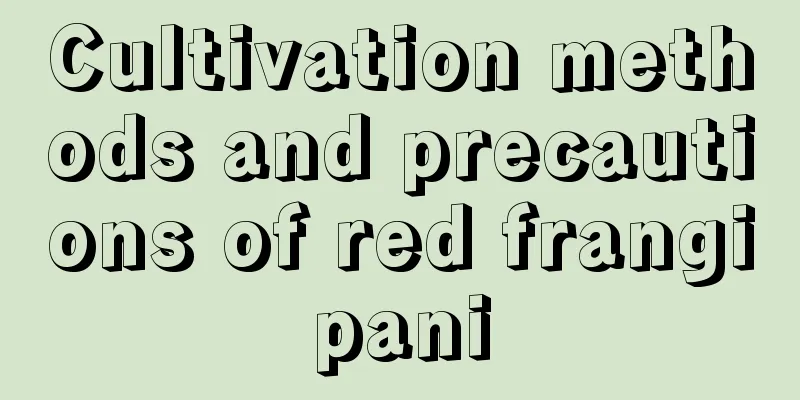Tips for growing flowers in summer: don’t wait until the flowers die before you see them!

1. What should we pay attention to when growing flowers in summer?1. Do not expose to sunlight.Do not expose flowers and plants to direct sunlight. You can move the flowers to the windowsill or balcony, hang a gauze curtain on the window, and let the sunlight shine in. This way, the flowers can enjoy sufficient sunlight without being damaged. 2. It is not advisable to use cold water to water flowers at noon.Different types of flowers have different habits and requirements for water. The amount of watering depends mainly on the size of the flowers, weather conditions, and the richness and dryness of the soil in the pot. Fern root plants such as peace lily and green ivy are relatively water-loving, but they should not be watered too much in the summer. Generally, they should be watered once every two or three days. For cactus plants, water them once every two weeks. 3. Water and fertilizer control should be appropriate.Flowers grow fast in summer, so sufficient fertilizer should be supplied in time. For general potted flowers and trees, apply decomposed thin liquid fertilizer once a week; for flowers that prefer acidic soil, apply alum fertilizer water once every two weeks. Pay attention to watering the next day after fertilizing. 4. Place flowers in a ventilated placeIn a room with air conditioning on, the air humidity is low, which can easily cause the leaves of flowers and plants to dry out and have burnt edges. When placing flowers in an air-conditioned room, keep them away from air outlets; open windows when the air conditioner is not in use to allow the flowers to absorb more fresh air. 5. Prune branches and leaves in timeMany flowers grow rapidly in summer. In order to maintain the beautiful shape of the plant, with many flowers and fruits, pruning and shaping are necessary. When begonia, fuchsia, salvia, chrysanthemum, etc. grow to a certain height, pinching off their tops can encourage more branches and more flowers. Many flowers often sprout small buds from their stems or branches, which should be removed in time to avoid consuming the plant's nutrients. Some foliage flowers should have their old leaves pruned off appropriately to promote the growth of new leaves. For chrysanthemums, roses, etc., excessive flower buds should be removed in time. For kumquat, pomegranate, and bergamot, when the young fruits grow to the size of soybeans, the excess young fruits should be removed. For some flowers that cannot produce seeds or are not prepared to harvest seeds, the remaining flowers should be cut off in time after they fade. 2. What flowers are suitable for growing in summer?1. Mint The mint scent is fresh and slightly spicy. It can remove indoor moisture and miasma in summer, and has the effect of refreshing the mind and repelling mosquitoes and flies. Another thing to note is that it is not certain whether the potted mint sold in the flower market has been sprayed with pesticides, so it is recommended not to eat it. 2. Lavender The cultivation of lavender was quite common in Roman times and was called the "Queen of Herbs". Its aroma can refresh the mind and improve eyesight, make people feel comfortable, relieve anxiety, and repel mosquitoes and flies. 3. White PhalaenopsisPhalaenopsis has large flowers shaped like butterflies and graceful posture, and is known as the "Queen of Orchids". Phalaenopsis orchids come in a variety of colors, and white is the best choice for summer. White is a cool color and looks cool, elegant, peaceful and tranquil. Maintenance tips: Phalaenopsis likes shade, the room temperature should not be too high, it likes ventilated and humid environment, the air humidity should be kept at around 60% to 80%, and the air should be kept circulating. It is best to have a breeze, avoid dry and hot wind, and there should not be too much water in the pot. 4. JasmineJasmine has emerald green leaves and elegant white flowers. It has single petals, double petals, simple leaves and compound leaves. It has a refreshing fragrance and blooms in late spring and early summer every year, with its flowering period from July to October. Maintenance tips: Jasmine likes fertilizer, especially during its long flowering period, it needs more fertilizer. During the growth period, it needs to be applied with thin cake fertilizer once a week. It likes warm and humid environment, and grows best in a well-ventilated and semi-shaded environment. It needs to be watered every morning and evening in midsummer. If the air is dry, it needs to be sprayed with water. 5. Golden-edged Tiger PilanThe rhizome is in a cylindrical shape, the leaves are shaped like swords, the edges of the leaves are wide yellow, and the leaves have green and white horizontal stripes in the middle, alternating with water-wave shapes. Maintenance tips: Golden-edged Tiger Gladiolus is a perennial herb that is evergreen all year round. It will grow taller year by year and will bloom if properly maintained. Golden-edged Tiger Gladiolus likes the sun and can be placed in sunny places such as balconies and sunrooms. It only needs to be watered once every two or three months. 6. PothosA climbing foliage plant with heart-shaped leaves with yellow spots and thin and soft stems. As it ages, the rhizomes will gradually grow longer and reach the ground. Maintenance tips: Chlorophytum is evergreen and shade-tolerant. Do not place it in a strong light environment. If the soil or nutrient particles feel dry to the touch, you need to water it. You can let it climb on a column made of palm leaves and place it in the hallway, or cultivate it in a hanging shape and place it in a study or windowsill, or place a pot high on the top of a furniture cabinet and allow the vines to droop freely, or when the vines hang too long, hang them in a circle to look like an emerald relief. The lush green flowers make people feel vibrant. There are so many flowers suitable for growing in summer, hurry up and choose one for your home! |
<<: How to take care of the flowers you just bought home
>>: This is how you should take care of your flowers and plants during the rainy season!
Recommend
How to distinguish between Datura and okra
1. Leaf Difference The leaves of Datura are long ...
How to water azalea
Tips for watering azalea Azalea is a plant of the...
The cultivation methods and precautions of succulent chocolate
The succulent chocolate plant is very easy to gro...
What is baby cabbage?
What is baby cabbage? Baby cabbage is a very smal...
How many days should I water my family's Epiphyllum?
1. Spring After the temperature rises in spring, ...
How to plant white chrysanthemum
Seed preparation tools Transparent plastic cups (...
Cultivation methods and maintenance matters of old fuchsia piles
How to grow fuchsia into an old tree Fuchsia is a...
When is the best time to plant okra?
Okra, known as the "king of vegetables "...
When is the right time to sow watermelon?
Suitable time for watermelon planting Watermelon ...
What are the characteristics of peach blossoms?
1. Characteristics of peach blossom Peach blossom...
The white-collar mother gave up her high salary and returned to the countryside to build a garden, and the whole village was stunned!
Image by: Yin Lanmo The article has been authoriz...
How to water the peacock plant
Watering tips for peacock arrowroot The peacock a...
Does the smooth sailing flower prefer sun or shade?
The smooth sailing plant is also called white pal...
The flowers at home grew rapidly after "eating" banana peels, and I don't have to go out to buy fertilizer anymore!
Banana peels become organic fertilizer, and the l...
How to grow the lucky flower to make it red
How to grow the lucky flower to make it red Selec...









